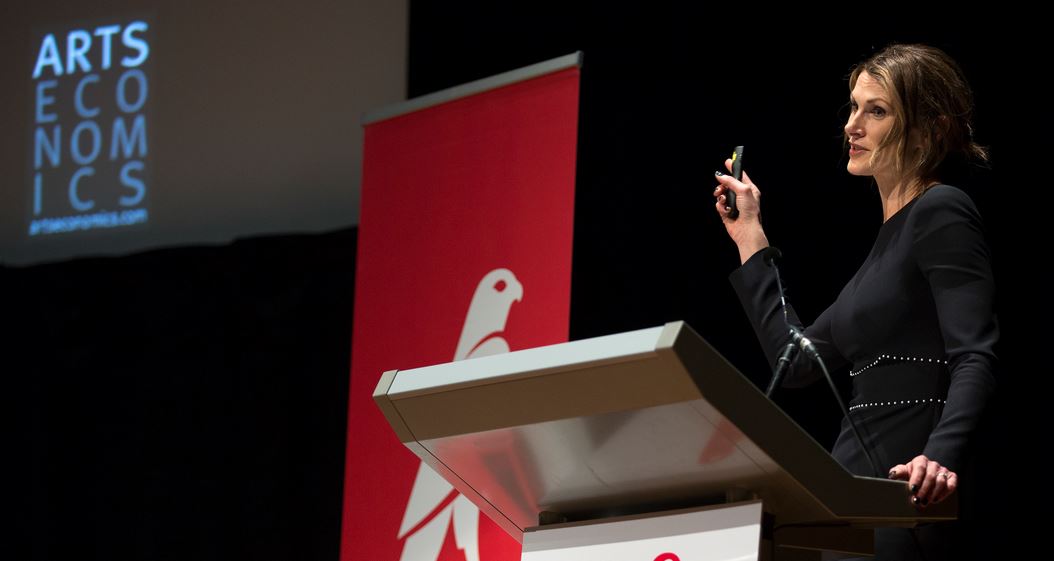Top end of art market flourishing due to concentration of wealth

Dr Clare McAndrew
The global economic trend towards a growing gap between rich and poor, whereby a huge portion of economic wealth is held by a small number of ultra-high-net-worth individuals, is being reflected in the art world.
That is the view of Dr Clare McAndrew, researcher and writer of the 2015 TEFAF Art Market Report. In the course of writing the report she observed that the art world is polarising, with both the top and the bottom ends of the market blossoming as a result of this wider economic trend.
“The ‘rich getting richer’ phenomenon has been very good for the top end of the market,” she says. “Even though the volume of sales is quite dispersed, a small number of transactions really dominate an increasing amount of the value in the art market.
“This trend is also very good for the budget end of the market because the rest of the population has less money, so they are looking to buy things in the low-price end. It’s a reflection of the wider pattern whereby the high end luxuries and budget goods do best when there is increasing income inequality.”
However, she notes that the current environment is not so good for the middle end of the market, where individuals with a moderate amount of money may conclude that it is not worth their while entering the market when they are unable to compete at the very top price points.
“These types of buyers might decide they are better off putting their money into something else,” she says. “There is certainly a danger that this narrow focus, where value is very concentrated in the top end, can have some real effects in the market.”
Contemporary and Post-War prices inflated
McAndrew says the concentration of wealth in the top end of the market has fuelled intense competition for work by a handful of Post-War and Contemporary artists, such as Rothko, Warhol and Bacon. While she does not believe that the art market as a whole is in a bubble, she does believe that the prices of these types of artists have become inflated.
“The Post War and Contemporary sector is an area where perception and reality have got very far apart,” she says. “Valuations in certain sectors have got very high but there are not a lot of speculators: you just have a very small circle of people buying and selling.
“If you talk about a bubble you imply it might burst. For a bubble to burst there would have to be a rush for liquidity from those people – and they’re not in any rush to get out. These are all very wealthy high-net-worth individuals that are fairly above the fray of what’s going on in the day to day economy.”
In her recent visits to art fairs in the US she has observed a very positive and buoyant atmosphere, with some buyers responding to the perceived overpricing of certain Post-War and Contemporary artists by spreading their nets a little wider.
“I know from talking to dealers that a lot of collectors are looking towards slightly older art to find some better value, so hopefully we will see a reduction in the focus on that very limited number of names. People have had to look wider and have gone back to maybe taking a few more risks and maybe buying and selling artists that are not quite as well known.”
Online sales boost lower end of market
Meanwhile, she has seen the lower end of the market receive a boost from the growth in online art sales. New players are taking advantage of this by introducing online services that facilitate the sourcing, buying and selling of art.
“They are making art more accessible to people who would like to engage with the market but don’t have the time to be going to lots of art fairs,” she says.
“We’re seeing a whole new layer of intermediaries, some of whom are mediating between people who are already intermediaries.”
She adds, however, that there are are limits to the amount of actual positive uptick that this trend gives the market: “It gives revenue stream to a company but it doesn’t grow the market as rapidly as it would if there was a whole new layer of companies.
“It was a surprising thing for me to find out the amount of these companies that are actually not creating new business but just creating access. They’ve got all sorts of different ways of generating revenue, whether they host the auctions themselves or just direct traffic to auction sites. But it’s a good thing because it’s targeting that area that has become slightly under pressure in the last few years. It’s making the market more accessible to the more average level buyers who have felt the pinch a little bit more in recent years.”